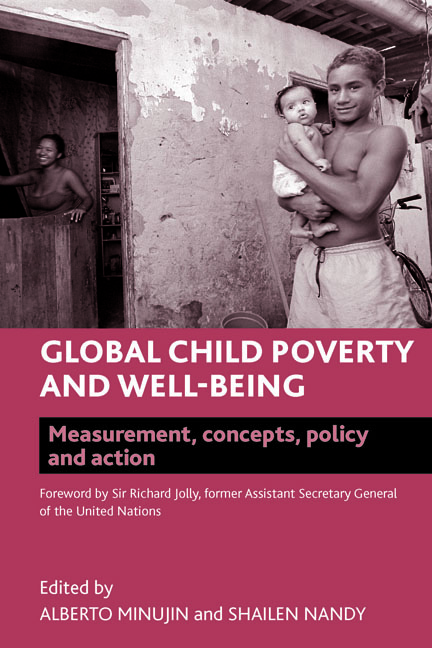five - Beyond headcount: measures that reflect the breadth and components of child poverty
Published online by Cambridge University Press: 07 September 2022
Summary
Introduction
Measures of child poverty undoubtedly influence policies to reduce child poverty. The accuracy, precision and informational content of child poverty measures create value insofar as they enable policy makers, parents and other groups to eliminate the suffering and deprivation of children. Hence debates on measures of child poverty are motivated by a shared objective: creating tools that enable children to enjoy a childhood free from fear and want. This chapter presents a new approach to child poverty measurement, which learns from, and improves on, previous methods.
The Alkire-Foster (2007, 2011) method presented in this chapter seeks to answer the question ‘Who is poor?’ by considering the intensity of each person's poverty. Once people are identified as poor, the measures aggregate information on poor people's deprivations in a way that can be broken down to see where and how people are poor. The resulting measures go beyond the headcount by taking into account the breadth, depth or severity of dimensions of child poverty. For example, Country A and Country B might both experience 40% child poverty, but in Country A, most children are deprived in three dimensions, whereas in Country B, most children are deprived in six of the same dimensions (these dimensions could include nutrition, water, sanitation, housing and education). Also, policy makers need to know the specific configuration of children's deprivations in their area in order to address poverty adequately. But the headcount ratio cannot be broken down by dimension to uncover the components of child poverty in different regions or age group or by gender. The Alkire-Foster method deals systematically with these issues and can be easily applied to child poverty measurement to enhance the headcount measure. In this chapter we explain how this can be done, and illustrate the case by measuring multidimensional child poverty in Bangladesh using four rounds of the Demographic and Health Survey.
We begin by reviewing the context of composite measures of child poverty. A key partner in dialogue is the ‘Bristol Approach’ that has contributed substantially to child poverty measurement (Gordon et al, 2003), and their specification of indicators and cut-offs is used insofar as is feasible in the analysis.
- Type
- Chapter
- Information
- Global Child Poverty and Well-BeingMeasurement, Concepts, Policy and Action, pp. 103 - 134Publisher: Bristol University PressPrint publication year: 2012

